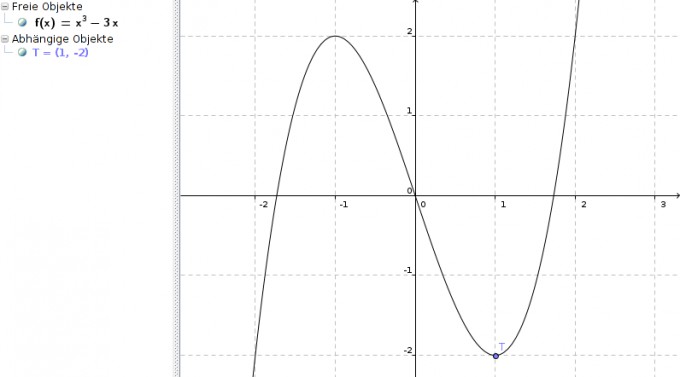Funktion 3. Grades allgemein:
f(x) = ax3 + bx2 + cx + d
f'(x) = 3ax2 + 2bx + c
f''(x) = 6ax + 2b
Wir suchen die 4 Unbekannten a, b, c und d.
Symmetrie zum Koordinatenursprung. Das heißt d = 0 und f(-x) = -f(x)
f(-x) = a*(-x)3 + b * (-x)2 + c*(-x) + d = -ax3 - bx2 - cx - d = -f(x)
b*x2 + d = -bx2 - d
2bx2 = 0
bx2 = 0
b = 0
Damit vereinfacht sich die Funktionsgleichung zu
f(x) = ax3 + cx
f'(x) = 3ax + c
Tiefpunkt bei T(1/-2), also
f(1) = -2 | a + c = -2 | a = -2 - c
und
f'(1) = 0 | 3a + c = 0
3 * (-2 - c) + c = 0 | -6 - 2c = 0 | -2c = 6 | c = -3
a = -2 - c = -2 + 3 = 1
f(x) = x3 - 3x

Besten Gruß